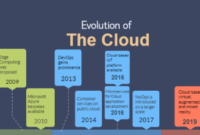Transforming Learning Environments
Daftar Isi Artikel
Technology has significantly transformed education, making learning more interactive and accessible. Digital tools such as online courses, educational apps, and virtual classrooms have expanded opportunities for learners of all ages. Platforms like Khan Academy, Coursera, and edX provide access to high-quality education from top institutions, breaking down geographical and financial barriers.
Interactive technologies, such as smartboards and digital simulations, enhance classroom experiences by providing dynamic and engaging ways to understand complex concepts. Virtual and augmented reality (VR and AR) offer immersive learning experiences, allowing students to explore historical events, scientific phenomena, and other subjects in a more interactive manner.
Personalized Learning
One of the most promising advancements in educational technology is personalized learning. Adaptive learning systems use AI to tailor educational content to individual students’ needs, pacing, and learning styles. This approach helps address diverse learning needs and ensures that students receive support tailored to their specific strengths and weaknesses.
Educational analytics also play a crucial role in monitoring and improving student performance. By analyzing data from students’ interactions with digital tools, educators can gain insights into learning patterns, identify areas for improvement, and implement targeted interventions to support student success.
Challenges in Educational Technology
Despite its benefits, the integration of technology in education presents several challenges. Access to digital resources is not uniform, and disparities in technology availability can exacerbate educational inequalities. Ensuring equitable access to devices, high-speed internet, and digital content is essential for maximizing the benefits of educational technology.
Additionally, there are concerns about screen time and the potential for technology to distract rather than enhance learning. Balancing technology use with traditional teaching methods and fostering digital literacy among students are important considerations for educators.
Technology and Environmental Sustainability
Advancements in Green Technology
Technology plays a crucial role in addressing environmental challenges and promoting sustainability. Innovations in green technology aim to reduce environmental impact and promote the efficient use of resources. Solar panels, wind turbines, and electric vehicles are examples of technologies designed to reduce reliance on fossil fuels and lower carbon emissions.
Smart grids and energy management systems optimize energy consumption by integrating renewable energy sources and improving efficiency. These technologies help manage the distribution of electricity more effectively and support the transition to a more sustainable energy system.
Sustainable Practices and Innovations
The rise of the circular economy, supported by technology, emphasizes reducing waste and reusing materials. Advances in recycling technologies and the development of biodegradable materials contribute to minimizing environmental impact. Innovations in sustainable agriculture, such as precision farming and vertical farming, enhance food production while conserving resources and reducing environmental degradation.
Technology also aids in environmental monitoring and disaster response. Remote sensing technologies and satellite imagery provide valuable data for tracking environmental changes, such as deforestation and climate patterns. Early warning systems for natural disasters leverage technology to improve preparedness and response efforts.
Addressing Environmental Challenges
While technology offers solutions, it also presents challenges related to electronic waste and resource consumption. The rapid pace of technological advancements often leads to the disposal of outdated devices, contributing to e-waste. Implementing effective recycling programs and designing products for longevity and recyclability are important steps in mitigating these challenges.
Ensuring that technological advancements align with environmental goals requires a concerted effort from governments, businesses, and individuals. Embracing sustainable practices and prioritizing environmental considerations in technological development are essential for achieving long-term sustainability.
The Future of Work and Technology
Automation and the Workforce
The impact of technology on the workforce is a significant area of concern and opportunity. Automation and AI are reshaping industries by performing tasks that were previously carried out by humans. While automation can increase efficiency and reduce costs, it also raises questions about job displacement and the future of work.
The key to navigating these changes is focusing on reskilling and upskilling the workforce. Investing in education and training programs helps workers adapt to new roles and industries. Emphasizing skills such as problem-solving, creativity, and emotional intelligence can prepare individuals for roles that complement technological advancements.
Remote Work and Collaboration
Technology has also enabled new ways of working, particularly through remote work and virtual collaboration. The COVID-19 pandemic accelerated the adoption of remote work, and many organizations have continued to embrace flexible work arrangements. Tools such as project management software, cloud-based collaboration platforms, and video conferencing have become essential for remote teams.
The future of work may involve a hybrid model, combining remote and in-office work to offer flexibility while maintaining team cohesion. As organizations adapt to these changes, technology will play a key role in supporting effective collaboration and productivity.
Ethical and Social Implications
The integration of technology into the workforce brings ethical and social considerations. Ensuring fair labor practices, addressing the digital divide, and protecting workers’ rights are important aspects of managing technological change. Policymakers, businesses, and workers must work together to create an inclusive and equitable future of work.
Conclusion
Technology has been a driving force behind human progress, continuously reshaping societies, industries, and daily life. From its early beginnings with simple tools to the advanced digital systems of today, technology has transformed the way we live, work, and interact with the world.
As we look to the future, the continued evolution of technology offers exciting possibilities and challenges. Embracing innovations while addressing ethical, environmental, and social considerations will be crucial for maximizing the benefits of technology and ensuring that it contributes positively to humanity.
The journey of technology is ongoing, and its impact will continue to evolve as new advancements emerge. By staying informed and engaged with these changes, we can harness the power of technology to create a more connected, efficient, and sustainable world.




